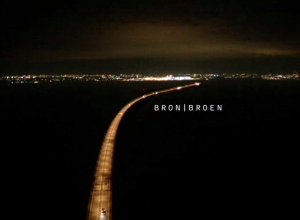Television is a rapidly growing medium, studied and examined as form of both media and cultural studies. AS we begin to enter the digital age, television develops more and more of a greater impact on society, both shaping and being shaped by the culture that grows alongside it. Tv was once thought to follow a one-directional flow model, sender -> medium -> message -> receiver, much like the early ideas behind radio, where it was assumed that the entire audience would receive any message delivered by producers in the same way, no matter who they were or how they received the content. However, today it has become apparent that this is certainly not the case. Not only does the interpretation of the message vary drastically according to who is receiving it, the meaning of any message is also altered by the method with which it is delivered. Thus, as this important notion regarding television and it’s methods and results of communication changed over time, so did the content which was being produced.
Television is no longer one set of defined structures and rules which must be adhered to by all producers, writers and directors, it has become so much more than that. It is a mix of not only every genre but every medium, incorporating the live to air, real time presentation of content that attracted audiences to radio and combining it with the narrative possibilities of film. And today, tv has extended far beyond the realms of simply being a box in the living room, it has become a social experience, an addiction for viewers who simply can’t get enough of their favourite shows. Producers keep their audiences hooked not just with cliffhangers at the end of episodes or seasons but with online content, by releasing episodes online to allow for binge watching, by getting stars and writers to attend fan conventions, by allowing the viewer to be as immersed as possible in the world of their show.
This progress has led to the rise of entirely new genres of storytelling, specifically, reality television and long form, complex narrative television. Shows such as Big Brother played a major part in the changing of the television landscape immersing us in a world of fully interactive television. Viewers are not only using the lives of others as their own form of entertainment but are actively involved in the constants futures (within the show). The evolution of television became a reflection of the evolution of society which in turn was impacted by the new cultures and traditions created by television. The rise of the complex narrative not only changed the landscape of television but of society.
The documentary “Hollywood: the rise of television series” discusses the evolution of television in regards to the impact received from the complex narrative. Viewers began hungering for increasingly interesting and mentally stimulating content and producers and writers started delivering. The progress of the content of tv can be seen clearly when comparing television in the 2000’s to that of the 60’s and 70’s, a time in which characters would never have even imagined to be having sex or using vulgar language. Today however, as was discussed by the writers interviewed for the documentary, characters not only do these things, but often it’s these actions which drive the story. Characters are given depth and history which is revealed slowly over the course of a season or even series with significant plot points planned far in advance. Programs and time slots are streamed to satisfy particular viewer interests and demographics rather than the original model of every show being delivered to every viewer as a single demographic. The concept of the nuclear family has faded tremendously with the progression of society into the modern day and television has grasped this wholeheartedly and used it to it’s advantage, consistently moving forward as a prominent medium of influence within society.
 version of the world, allowing viewers to feel as if they are a part of a certain place without having ever been here. I can relate to this from personal experience. Until July of 2012, I had never been to the United States. However, from all the television that I watched, I felt as if I lived there myself, knew the various cities and landmarks like my own neighbourhood. But upon arriving in New York, i realised this was not the case. While I did recognise various things like Times Square or the Statue of Liberty, they were different to how I had imagined, different to what I had seen on the television (The Statue of liberty, for example, was a lot smaller than I had thought) and this made me realise that the things we see and the places we feel we are a part of on a television show are just that, a television show. But is that the sole reason why we watch international television, to experience new places?
version of the world, allowing viewers to feel as if they are a part of a certain place without having ever been here. I can relate to this from personal experience. Until July of 2012, I had never been to the United States. However, from all the television that I watched, I felt as if I lived there myself, knew the various cities and landmarks like my own neighbourhood. But upon arriving in New York, i realised this was not the case. While I did recognise various things like Times Square or the Statue of Liberty, they were different to how I had imagined, different to what I had seen on the television (The Statue of liberty, for example, was a lot smaller than I had thought) and this made me realise that the things we see and the places we feel we are a part of on a television show are just that, a television show. But is that the sole reason why we watch international television, to experience new places?
